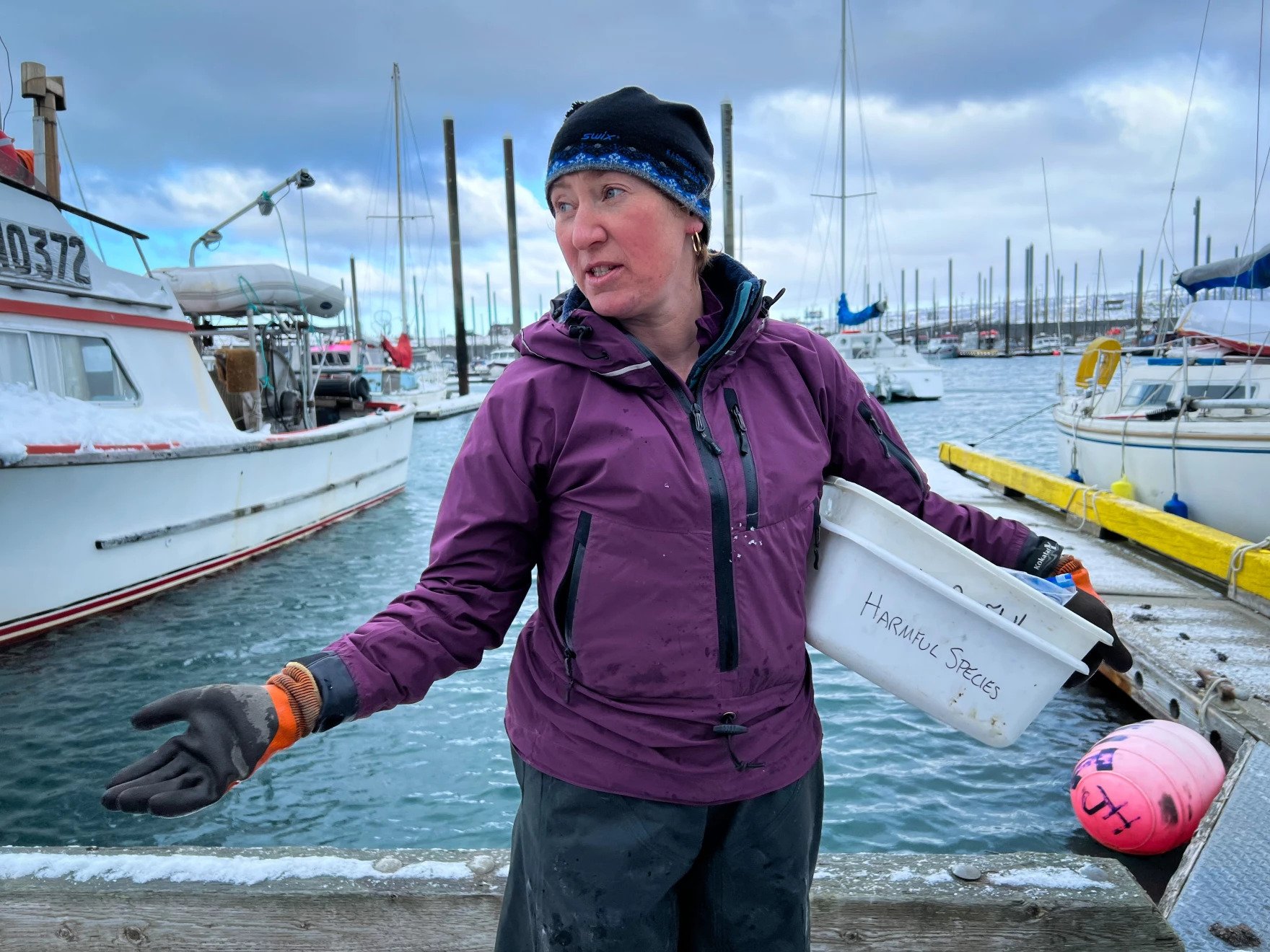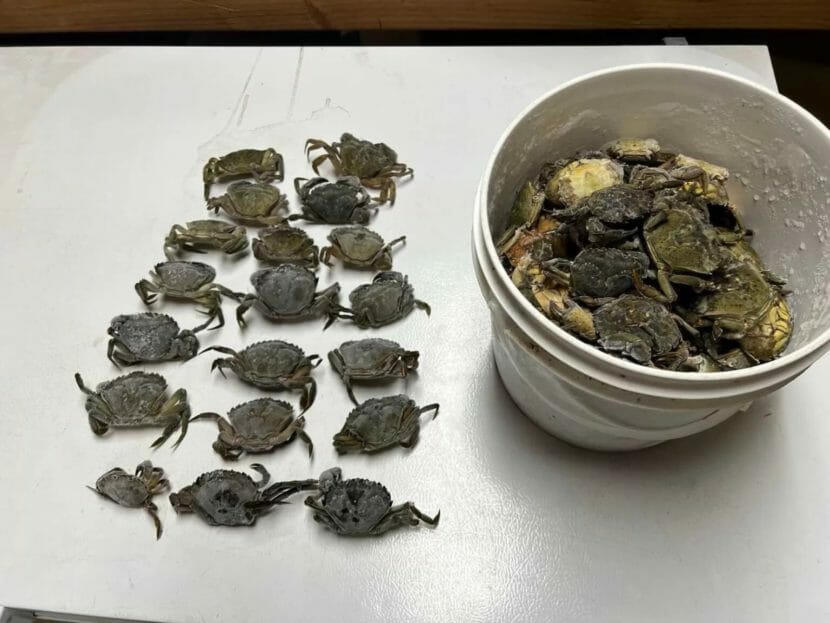Unalaska readies to deploy traps for invasive European green crabs - Alaska Public Media News

Unalaska is preparing to start monitoring for European green crabs. That's after the invasive species was first found in Alaska last July.
The crabs could cause a big problem. They destroy habitat and outcompete native species.
Biologists with the Alaska Department of Fish and Game say the monitoring program is crucial in the nation's largest fishing port. They're preparing to deploy traps later this summer.
"We don't have any reason to believe that European green crab are here or established in the region, but we're also not currently doing any monitoring," said Ethan Nichols, the assistant area manager for shellfish with ADF&G in Dutch Harbor. "With European green crab steadily moving up the West Coast, through British Columbia, and into southern Southeast Alaska as of last year, I think it's important that we start monitoring here in the Port of Dutch Harbor, given the amount of international ship traffic that we have."

In much of the state, scientists have had their eyes on the species for years. In communities around Kachemak Bay and Prince William Sound, they've been setting traps for about two decades.
Tammy Davis is the invasive species program coordinator with the Department of Fish and Game in Juneau. She says European green crabs — which are native to coastal Europe and North Africa, and were introduced to the Atlantic coast through ballast water in the early 1800s — are so concerning, because although they're small, they're incredibly aggressive.
They reduce eelgrass (important nursery habitat for juvenile fish) and populations of clams, oysters, mollusks and other invertebrates that live on or in the seafloor. They can also prey on juvenile native crabs, like Dungeness — something that could impact Aleutian Island fisheries down the line, if their habitats overlap.
"Green crab are considered one of the top 100 invasive species globally," Davis said.
Like anywhere else, Davis said, they would have impacts on the nearshore environment, putting organisms that rely on that intertidal and subtidal habitat at risk.
"They behave differently in different environments," she said. "There's, of course, some sort of general parameters of temperature triggers for reproduction, and tolerance for temperatures and so forth. But they're very hardy organisms, and we don't know what the potential impacts are in an environment like Dutch Harbor at this point."
Davis said biologists are concerned the species could be introduced into Dutch Harbor through ballast water discharge, or by currents carrying larvae out the Aleutian Chain.
She said they hope to identify coastal areas with high-value commercial, recreational and subsistence harvests and use intensive trapping as a way to monitor and control green crab populations as they start to spread across the state.
Setting traps also helps them understand what species use these areas and are at risk of green crab predation, according to Davis.
"Whatever ends up in our traps also uses this part of the nearshore. Those are the species that are at risk from green crab," she said.
Davis said although it's not likely they'll be able to get rid of green crabs if they establish themselves in the Aleutians, early detection is crucial.
"You're keeping the population of green crab low enough that the negative impact they have on the native species and the native habitat is not greater than the native species can handle," she said.
ADF&G plans to launch the monitoring program in the Port of Dutch Harbor this summer. Five traps are on their way to the island now.
If you find what you think might be a European green crab, you can call ADF&G's invasive species hotline at 1-877-INVASIV or visit their website.
Comments
Post a Comment